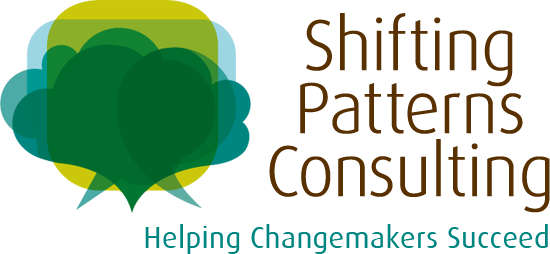credit: Hotblack at Morguefile
What else needs to happen for social enterprises to move in the direction of networks? This provocative question, posed by Elisa Birnbaum, Co-Founder, Publisher and Editor of See Change Magazine, during the publication of my previous post, “Linking the Future of Social Change to Networks,” prompted me to think more deeply about the evolution underway in social enterprise and my role in this transition. Elisa had a good point; it’s one thing to predict a future where the formation and expansion of networks to advance social change goals is commonplace, and entirely another to explain what needs to happen in order to bring this future about.
To answer this question I’ve drawn inspiration from the words of an ethicist, a poet, and an African proverb.
“Nothing we do, however virtuous, can be accomplished alone” – Reinhold Niebuhr
1) Shift from Silo to Systems Thinking: Niebuhr’s words remind us that change at any level requires support. In working on large-scale challenges, such as environmental sustainability or increasing access to economic opportunities, there is a tendency to function within mental and socially constructed barriers. This includes viewing a situation from a single perspective or neglecting to take into account how solutions impact the broader system. System thinking offers an opportunity to overcome these limitations. In The Art of Systems Thinking, Joseph O’Connor and Ian McDermott view this process as “seeing beyond isolated and independent incidents to recognize deeper patterns.” It is this ability that enables us to better understand and influence events.
A good example is Partnership for Possibility, the flagship program of Symphonia for South Africa, which is addressing the country’s education crisis by placing schools at the center of community. This unique model, which I came to better understand during a short-term assignment, helps improve learning outcomes for South African children by partnering school principals with business leaders to mobilize youth, parents, teachers, businesses, civil society, and government to work together to improve the education environment. By broadening the focus of education to include what occurs outside as well as inside the classroom and extending the commitment for achieving positive results into the community, Partnership for Possibility has succeeded in spreading its model to nearly 200 schools across South Africa.
“Unity is strength… when there is teamwork and collaboration, wonderful things can happen” – Mattie Stepanek
2) Build a Sustainable Network: Beyond the considerations of whether and how to form a network, some of which are addressed in my previous post, new networks are more likely to emerge when existing ones are sustainable. A dilemma that has occurred in my efforts to strengthen a mature network is where to draw the line between investing in the organizational capacity of members that are struggling to survive and letting go of those destined to fail. While it is tempting to triage members according to their capacity for survival, deliberations with the network’s leadership have prompted an examination of its mission and values in relation to capacity building. As this organization charts a path forward solutions to this dilemma can be found in good practices for network strengthening, such as setting clear expectations of all members, holding members accountable for meeting these expectations, ensuring that the network’s values are aligned with its mission and operations, creating a structure and securing resources for supporting the work of the network, and providing incentives (like capacity building grants) for members to improve their operations.
“It takes a village to raise a child” – African proverb
3) Cultivating a Supportive Ecosystem: For networks (especially ones intended to tackle the magnitude and complexities of social change) to thrive, a supportive environment is needed. In addition to capacity building, which takes place inside the network, there is also a need for an ecosystem that can foster the conditions within which new networks emerge and existing ones can be sustained. A supportive ecosystem includes forums where changemakers and stakeholders can meet to discuss the interconnections between the issues they are working on and take collective action, regulatory frameworks that make it easier for networks to operate and share resources, allocation of resources (like the Social Innovation Fund) that are dedicated to the development of networks, and impact accelerators that provide business development guidance and access to investors.
A good example of an emerging ecosystem is groups of impact accelerators that are meeting to discuss ways to support social enterprises. I recently attended one such meeting that took place during a conference for early stage social enterprises. In addition to exploring opportunities for collaboration participants discussed balancing the demands for rigor in demonstrating results with the resource intensive nature of data collection.
Transitioning to social enterprise 2.0 where networks are ubiquitous in bringing about social change requires shifting how we approach social challenges, strengthening the capacity of networks to operate effectively, and creating a supportive ecosystem where they can thrive.
This post was published by SEE Change Magazine on September 17, 2014.





